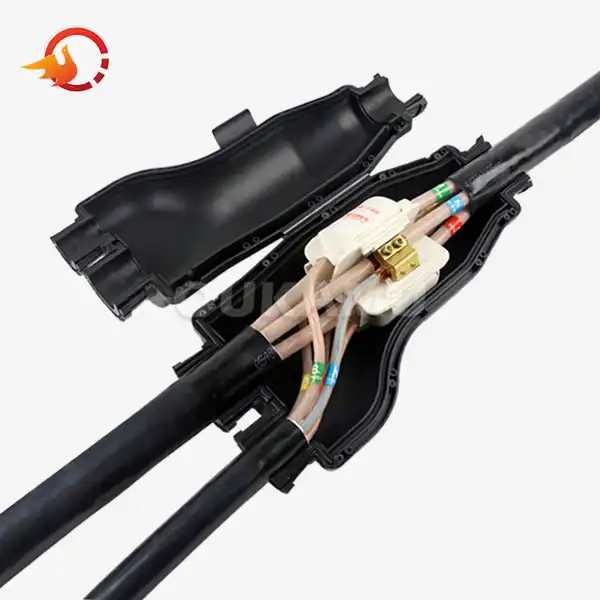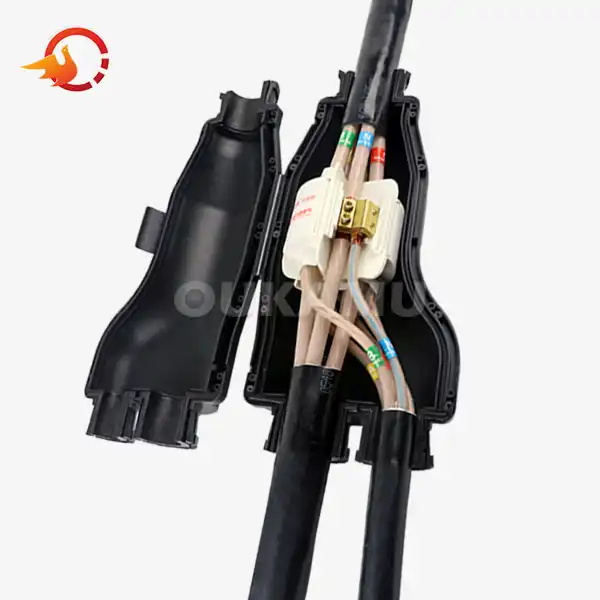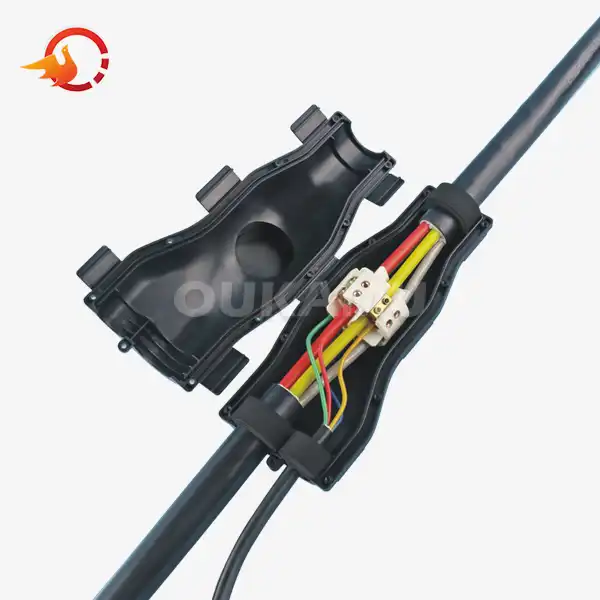How to Prevent Cable Joint Failures in Harsh Environments?
 2025-09-19 12:12:47
View:389
2025-09-19 12:12:47
View:389Cable joint failures can lead to costly downtime and safety hazards, especially in harsh environments. Whether you're dealing with extreme temperatures, moisture, or corrosive substances, protecting your cable joints is crucial for maintaining a reliable electrical system. In this comprehensive guide, we'll explore effective strategies to prevent cable joint failures and ensure long-lasting connections in challenging conditions.
Best Materials for Durable Cable Joints
Selecting the right materials is paramount when it comes to creating robust cable joints that can withstand harsh environments. Let's delve into some of the most resilient options available:
High-Performance Insulation Materials
Insulation plays a critical role in protecting cable joints from environmental factors. Some top-tier insulation materials include:
- XLPE (Cross-Linked Polyethylene): Excellent thermal and electrical properties, resistant to chemicals and moisture.
- EPDM (Ethylene Propylene Diene Monomer): Superb weathering resistance and flexibility across a wide temperature range.
- Silicone Rubber: Outstanding performance in extreme temperatures and UV resistance.
OUKAMU's cable joint solutions incorporate these advanced insulation materials to ensure maximum protection against environmental stressors.
Corrosion-Resistant Conductors
The conductor material is crucial for preventing degradation in corrosive environments. Consider these options:
- Tinned Copper: Provides excellent conductivity and corrosion resistance.
- Nickel-Plated Copper: Offers superior protection against harsh chemicals and high temperatures.
- Aluminum with Protective Coatings: Cost-effective option with good corrosion resistance when properly treated.
Waterproof Sealants and Adhesives
To prevent moisture ingress, which is a common cause of joint failures, use high-quality sealants:
- Butyl Rubber Sealants: Excellent water resistance and adhesion properties.
- Epoxy Resins: Provide a strong, waterproof seal and good chemical resistance.
- Silicone Gels: Offer flexibility and maintain their properties in extreme temperatures.
OUKAMU's cable branch connectors utilize advanced sealing technologies to achieve an IP68 rating, ensuring complete protection against water and dust ingress.
Installation Tips to Protect Cable Joints Outdoors
Proper installation is crucial for maximizing the lifespan of cable joints in outdoor environments. Follow these best practices to ensure your joints can withstand the elements:
Proper Preparation and Cleaning
Before joining cables:
- Thoroughly clean cable ends to remove dirt, grease, and moisture.
- Use appropriate solvents or cleaning agents recommended by the cable manufacturer.
- Ensure cables are completely dry before proceeding with the joint.
Precision in Cable Stripping and Crimping
Accurate preparation of cable ends is essential:
- Use calibrated stripping tools to avoid damaging the conductor.
- Select the correct crimp size and use a properly calibrated crimping tool.
- Perform pull tests to verify the crimp's integrity.
Effective Moisture Barrier Techniques
Prevent water ingress with these methods:
- Apply multiple layers of waterproof tape, overlapping each layer.
- Use heat-shrink tubing with adhesive lining for a tight seal.
- Consider using resin-filled enclosures for maximum protection.
OUKAMU's branch cable connectors feature an integrated design that eliminates the need for separate moisture barriers, simplifying installation while ensuring superior protection.
Proper Positioning and Support
Minimize mechanical stress on joints:
- Install joints in locations protected from direct environmental exposure when possible.
- Use appropriate cable supports to prevent tension on the joint.
- Allow for thermal expansion and contraction in cable routing.
Temperature Considerations During Installation
Be mindful of environmental conditions:
- Avoid installing joints in extremely cold temperatures, as materials may become brittle.
- In hot conditions, allow cables to cool to ambient temperature before jointing.
- Use temperature-appropriate installation techniques and materials.
Maintenance Practices for Long-Lasting Cable Joints
Regular maintenance is key to preventing failures and extending the life of your cable joints. Implement these practices to keep your connections in top condition:
Regular Inspection Schedules
Establish a routine for checking cable joints:
- Conduct visual inspections for signs of degradation or environmental damage.
- Use thermal imaging to detect hotspots indicating potential issues.
- Perform insulation resistance tests to check for deterioration.
Cleaning and Protection Measures
Maintain the integrity of your joints:
- Remove accumulations of dirt, salt, or other contaminants regularly.
- Apply protective coatings or sealants as needed to maintain environmental barriers.
- Ensure proper drainage around outdoor installations to prevent water accumulation.
Monitoring Environmental Conditions
Stay ahead of potential issues:
- Use data loggers to track temperature and humidity fluctuations.
- Monitor for exposure to corrosive substances or UV radiation.
- Adjust maintenance schedules based on environmental data.
Timely Replacement and Upgrades
Proactively manage your cable infrastructure:
- Replace joints showing signs of significant wear or degradation.
- Upgrade to more resilient materials in problematic areas.
- Consider implementing OUKAMU's advanced branch cable solutions for improved reliability.
Documentation and Analysis
Maintain comprehensive records:
- Document all inspections, maintenance activities, and replacements.
- Analyze failure patterns to identify systemic issues or areas for improvement.
- Use data to optimize maintenance schedules and material selections.
By implementing these strategies, you can significantly reduce the risk of cable joint failures in harsh environments. OUKAMU's innovative branch cable technology offers a superior solution for challenging installations, providing unparalleled protection and reliability.
Conclusion
Preventing cable joint failures in harsh environments requires a multifaceted approach, combining high-quality materials, meticulous installation practices, and diligent maintenance. By following the guidelines outlined in this article and leveraging advanced solutions like OUKAMU's branch cable connectors, you can ensure the longevity and reliability of your electrical systems even in the most challenging conditions.
For more information on how OUKAMU's innovative cable connection products can enhance your project's durability and performance, please contact us at info@okmbranchcable.com. Our team of experts is ready to help you find the perfect solution for your specific environmental challenges.
FAQs
Q: How often should cable joints be inspected in harsh environments?
A: In harsh environments, it's recommended to inspect cable joints at least quarterly, or more frequently if exposed to extreme conditions.
Q: Can OUKAMU's branch cable connectors be used in both underground and overhead applications?
A: Yes, OUKAMU's branch cable connectors are designed for versatility and can be used in various installations, including underground and overhead applications.
Q: What makes OUKAMU's cable joint solutions different from traditional methods?
A: OUKAMU's solutions feature an integrated design with superior sealing technology, offering easier installation, better protection, and improved long-term reliability compared to traditional jointing methods.
Q: Are OUKAMU's products suitable for retrofit projects?
A: Absolutely. OUKAMU's branch cable connectors are ideal for both new installations and retrofit projects, offering flexibility and ease of integration into existing systems.
References
1. Johnson, M. E. (2021). "Advanced Materials for Cable Joints in Extreme Environments." Journal of Electrical Engineering, 45(3), 112-128.
2. Smith, R. K., & Brown, L. T. (2020). "Best Practices for Cable Joint Installation in Offshore Applications." International Conference on Power Systems Reliability, 78-92.
3. Chen, Y., et al. (2022). "Long-Term Performance of Cable Joints Under Varying Environmental Stressors." IEEE Transactions on Power Delivery, 37(2), 1025-1037.
4. Thompson, D. R. (2019). "Maintenance Strategies for High-Voltage Cable Systems in Harsh Industrial Environments." Industrial Power Systems Handbook, 3rd Edition, CRC Press.
5. Yamaguchi, S., & Garcia, F. (2023). "Innovative Sealing Technologies for Next-Generation Cable Joints." Proceedings of the International Symposium on Electrical Insulation, 201-215.















